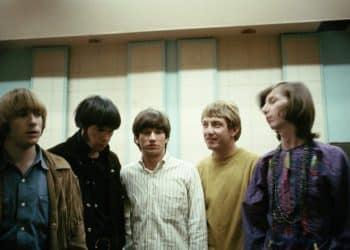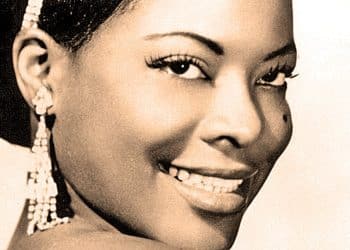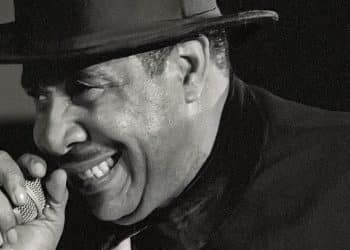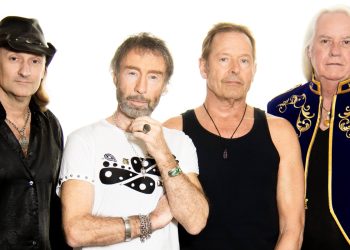Instrumental music has a timeless magic—no lyrics, no vocals, just pure sound that speaks directly to the soul. Across decades and genres, certain instrumental tracks have risen above the rest, capturing imaginations, dominating charts, and becoming unforgettable pieces of cultural history. From the electrifying pulse of synth-heavy anthems to the smooth elegance of orchestral arrangements, these songs prove that music doesn’t need words to make an impact. Whether it’s the adrenaline rush of a fast-paced rock solo or the emotional pull of a cinematic score, instrumental hits have the power to transport us, energize us, and stir emotions we didn’t even know we had. In this list, we dive into the Top 15 Most Popular Best Instrumental Songs of All Time—tracks that didn’t just accompany moments, they defined them. These are the melodies that filled stadiums, soundtracked iconic films, and became the backdrop to countless memories. So whether you’re a longtime music lover or just discovering the power of wordless soundscapes, get ready to explore the instrumentals that have left a lasting mark on music history. Turn up the volume—no lyrics needed.
1. “Axel F” – Harold Faltermeyer (1984)
When Beverly Hills Cop hit theaters in 1984, audiences were treated to more than just Eddie Murphy’s sharp wit and comedic timing—they were also introduced to one of the most infectious synth instrumentals of the decade. Composed by German musician Harold Faltermeyer, “Axel F” became an instant classic, defining the neon-soaked, high-energy vibe of the ’80s. Originally intended as a recurring theme for Eddie Murphy’s character, the track took on a life of its own. Its pulsing bassline, crisp digital beats, and unforgettable melody made it an unlikely hit, climbing into the Top 10 in multiple countries, including the U.S. Faltermeyer used the Roland Jupiter-8 and Yamaha DX7 synthesizers to craft its sleek, futuristic sound, cementing its place in synth-pop history. Over the years, “Axel F” has been remixed and reimagined countless times, most notably in 2005 with the Crazy Frog version that introduced the tune to a whole new generation. Despite these variations, Faltermeyer’s original remains unmatched in its cool, polished brilliance—a time capsule of the electronic revolution in pop music. Whether in film, commercials, or dance clubs, “Axel F” still pulses with the same vibrant energy that made it a hit decades ago.
2. “Green Onions” – Booker T. & the M.G.’s (1962)
There are few instrumentals as effortlessly cool as “Green Onions.” Released in 1962 by Booker T. & the M.G.’s, this track helped define the gritty, soulful sound of Stax Records. It’s a bluesy, funky, no-frills jam led by Booker T. Jones’s hypnotic Hammond organ, with Steve Cropper’s sharp, understated guitar licks providing the perfect counterpoint. The song’s magic lies in its simplicity—every note, every pause, is deliberate, oozing with raw attitude. “Green Onions” became an unexpected hit, reaching No. 3 on the Billboard Hot 100, a rare feat for an instrumental. Its swaggering groove has made it a staple in films, commercials, and TV shows, often used to instantly set a vintage-cool mood. The track’s influence stretches far beyond its era, seeping into rock, garage, and even hip-hop. More than 60 years later, “Green Onions” still sounds fresh, its timeless groove proving that when it comes to great music, less is often more.
3. “Sleep Walk” – Santo & Johnny (1959)
Few instrumentals capture pure emotion quite like “Sleep Walk.” Released in 1959, this hauntingly beautiful tune by Brooklyn brothers Santo and Johnny Farina has an almost dreamlike quality. The steel guitar’s shimmering, weeping melody feels like it’s floating through the night air, evoking lost love, nostalgia, and quiet reflection—all without a single word. “Sleep Walk” wasn’t just a hit; it was a sensation, reaching No. 1 on the Billboard Hot 100, a remarkable achievement for an instrumental. The track’s gentle sway and romantic melancholy made it an enduring favorite, frequently used in films and TV whenever a scene calls for bittersweet longing. At a time when rock and roll was exploding with high-energy hits, “Sleep Walk” stood out for its elegance and restraint. The song’s influence continues to this day, with artists from various genres covering and referencing its signature melody. More than just a piece of music, “Sleep Walk” is a feeling—a moment frozen in time, wrapped in the warmth of a steel guitar.
4. “Frankenstein” – The Edgar Winter Group (1973)
If ever there was a rock instrumental that could be described as pure controlled chaos, it’s “Frankenstein.” Released in 1973, this high-octane track by The Edgar Winter Group is a rollercoaster ride of pounding drums, searing guitar riffs, wailing saxophone, and groundbreaking synthesizer solos. It wasn’t just an instrumental; it was a statement. The song’s name, “Frankenstein,” comes from the way it was pieced together in the studio from various takes, much like the monster in Mary Shelley’s novel. The result? A genre-blurring, mind-bending jam that somehow blends rock, jazz, and proto-electronica into a cohesive, electrifying masterpiece. The track soared to No. 1 on the Billboard Hot 100, a rare feat for an instrumental, proving that you don’t need lyrics to make a massive hit. Decades later, “Frankenstein” remains a testament to experimental musicianship, a bold and fearless exploration of sound that still sounds fresh and exhilarating today.
5. “Chariots of Fire” – Vangelis (1981)
Some instrumentals don’t just accompany a moment—they define it. “Chariots of Fire,” composed by Greek electronic maestro Vangelis for the 1981 film of the same name, is one such piece. From the very first notes of its slow-building, triumphant melody, the track instantly conjures images of perseverance, victory, and the human spirit. Its sweeping synthesizer lines and understated piano theme create an atmosphere that’s both grand and deeply personal. The song became an international sensation, topping the Billboard Hot 100 in 1982 and winning an Academy Award for Best Original Score. Over the years, “Chariots of Fire” has been used in countless films, television shows, and even comedic parodies—often accompanying slow-motion sequences meant to capture the gravity of a moment. But beyond the pop culture references, the song remains timeless. Vangelis masterfully blended classical composition with modern electronic elements, creating a piece that still resonates more than 40 years later.
6. “Love’s Theme” – The Love Unlimited Orchestra (1973)
Before disco took over the dance floors, Barry White’s Love Unlimited Orchestra set the stage with “Love’s Theme.” Released in 1973, this lush, orchestral instrumental is the very definition of smooth. With its sweeping strings, gentle rhythm, and warm, romantic atmosphere, the track exudes pure elegance. It was one of the first instrumental songs to reach No. 1 on the Billboard Hot 100, proving that you didn’t need lyrics to create a hit. White’s vision of blending classical instrumentation with a soulful groove was revolutionary, laying the groundwork for the rich soundscapes that would later define disco. But “Love’s Theme” isn’t just a relic of its time—it’s a timeless piece that continues to be sampled, covered, and celebrated. Whether playing at a wedding, setting the mood for a romantic evening, or simply providing a moment of musical bliss, “Love’s Theme” remains one of the most beautifully crafted instrumentals in pop history.
7. “Jessica” – The Allman Brothers Band (1973)
Few songs capture the spirit of a carefree road trip like “Jessica.” Released in 1973 on Brothers and Sisters, this seven-minute instrumental by The Allman Brothers Band is pure joy in musical form. Written by guitarist Dickey Betts as a tribute to his daughter, the track radiates warmth with its bright, flowing melodies and intricate guitar harmonies. The band masterfully blends blues, country, and rock into a seamless jam, showcasing their technical prowess without ever losing that easygoing feel. While it didn’t dominate the charts, “Jessica” found lasting success as a staple of classic rock radio and later as the theme song for the BBC’s Top Gear. It’s a song that feels like sunshine—uplifting, free-spirited, and timeless.
8. “The Entertainer” – Scott Joplin (1902)
Scott Joplin’s “The Entertainer” is one of the most recognizable piano pieces in American history. Originally composed in 1902 during the ragtime era, it found new life in the 1970s when it was used in the Oscar-winning film The Sting (1973), arranged by Marvin Hamlisch. Ragtime was the pop music of its time, and Joplin was its undisputed king, blending classical structure with a syncopated, toe-tapping rhythm that still feels fresh over a century later. The tune’s bouncy, lighthearted melody remains a favorite among pianists of all skill levels, and its influence stretches beyond ragtime into jazz and modern music. Whether heard on an old-timey saloon piano or in a contemporary arrangement, “The Entertainer” is a timeless delight that continues to captivate listeners of all generations.
9. “Classical Gas” – Mason Williams (1968)
“Classical Gas” is a masterful blend of classical composition and contemporary pop energy, showcasing Mason Williams’ breathtaking guitar skills. Released in 1968, the piece was composed and performed by Williams, who was also a writer for The Smothers Brothers Comedy Hour. The song’s rapid-fire fingerpicking, combined with lush orchestral backing, creates an exhilarating, almost cinematic listening experience. The title itself is a clever play on the idea of classical music being “gassed up” for a modern audience. Winning three Grammy Awards, “Classical Gas” became the most-played instrumental on U.S. radio during its era, a testament to its widespread appeal. Beyond its technical brilliance, the song carries an infectious energy that makes it feel timeless. Whether it’s being performed live, featured in films, or inspiring new generations of guitarists, “Classical Gas” continues to prove that an instrumental track can be just as emotionally stirring as a song with lyrics.
10. “Wipe Out” – The Surfaris (1963)
From the very first sinister laugh that kicks off the track, “Wipe Out” explodes with pure adrenaline. Released in 1963, this high-energy surf rock anthem by The Surfaris is instantly recognizable thanks to Ron Wilson’s legendary drum solo and its twangy, reverb-soaked guitar riffs. The song captures the essence of California’s beach culture—fast, fun, and carefree. “Wipe Out” shot to No. 2 on the Billboard Hot 100 and has since become one of the most iconic instrumentals in rock history. It’s been covered, sampled, and used in everything from movies to commercials, making it a cultural touchstone for generations. The pounding rhythm and electrifying drum fills make it a favorite among drummers, while its sunny, surfboard-ready vibe cements its place as a staple of summer playlists. Even decades later, few songs can match the raw, rebellious energy of “Wipe Out.”
11. “Albatross” – Fleetwood Mac (1968)
Long before Fleetwood Mac became a household name with their ‘70s pop-rock hits, they released one of the most beautifully serene instrumentals of all time: Albatross. Written by guitarist Peter Green and released in 1968, the track drifts along like the seabird it’s named after, evoking images of gentle ocean waves and quiet contemplation. With its slow tempo, layered guitar harmonies, and ethereal atmosphere, Albatross is a study in musical restraint. Every note breathes, creating a hypnotic, dreamlike quality that feels both soothing and deeply emotional. The song became a surprise No. 1 hit in the UK and influenced The Beatles’ Sun King from Abbey Road. Decades later, Albatross remains a masterpiece of mood and texture—proof that music doesn’t always need lyrics to tell a story.
12. “Apache” – The Shadows (1960)
With its galloping rhythm and echoing guitar, Apache by The Shadows is one of the most influential instrumentals in rock history. Released in 1960, this song helped define the British rock scene before The Beatles took over. Hank Marvin’s unmistakable lead guitar tone—clean, melodic, and dripping with reverb—became an inspiration for generations of guitarists. The track was influenced by Western movies and Native American themes, giving it a cinematic, adventurous feel. Apache spent five weeks at No. 1 on the UK charts and became a global sensation. It also found a second life decades later when The Sugarhill Gang transformed it into a hip-hop classic in 1981. Whether it’s heard in its original form or in countless covers and samples, Apache remains an electrifying piece of music that shaped the future of guitar-driven rock.
13. “The Ecstasy of Gold” – Ennio Morricone (1966)
Few pieces of music capture sheer drama and intensity like The Ecstasy of Gold. Composed by Ennio Morricone for the climactic graveyard scene in The Good, the Bad and the Ugly (1966), this track builds from an eerie whisper to an explosive orchestral crescendo. As Tuco frantically searches for buried treasure, Morricone’s sweeping strings, haunting vocals, and bold brass create a sense of urgency that grips the listener. Though originally composed as a film cue, the song has taken on a life of its own. It has been used in movie trailers, commercials, and even adopted as the entrance music for Metallica’s live shows. The Ecstasy of Gold is more than just a film score—it’s a musical journey packed with emotion, excitement, and grandeur, cementing Morricone’s status as one of the greatest composers of all time.
14. “Theme from ‘A Summer Place’” – Percy Faith (1959)
Soft, sentimental, and utterly romantic, Percy Faith’s Theme from ‘A Summer Place’ is the soundtrack to a golden, sun-drenched nostalgia. Released in 1959 and featured in the 1960 film A Summer Place, this orchestral masterpiece spent a record-breaking nine weeks at No. 1 on the Billboard Hot 100, making it one of the most successful instrumentals ever. With its lush string arrangements and sweeping melodies, the song perfectly captures the dreamy, bittersweet essence of young love. Over the years, it has become an enduring symbol of romance, appearing in countless films, TV shows, and even parodies. The melody lingers in the mind long after the song ends, floating effortlessly like a warm summer breeze.
15. “Rise” – Herb Alpert (1979)
Herb Alpert’s Rise is the epitome of late ‘70s cool—a sleek, jazz-infused instrumental with an irresistible groove. Released in 1979, this track marked a bold departure from Alpert’s earlier work with the Tijuana Brass. Instead of the bright mariachi-inspired sound he was known for, Rise embraced smooth jazz, funk, and disco influences, creating a laid-back yet sophisticated atmosphere. The song’s hypnotic bassline, crisp percussion, and Alpert’s signature trumpet work blend seamlessly, making it as perfect for a dance floor as it is for a late-night drive. Rise climbed to No. 1 on the Billboard Hot 100, making Alpert the only artist to top the chart with both a vocal and instrumental track. In the ‘90s, it gained new life when The Notorious B.I.G. sampled it for his hit Hypnotize, proving that Rise is as timeless as it is effortlessly cool.









